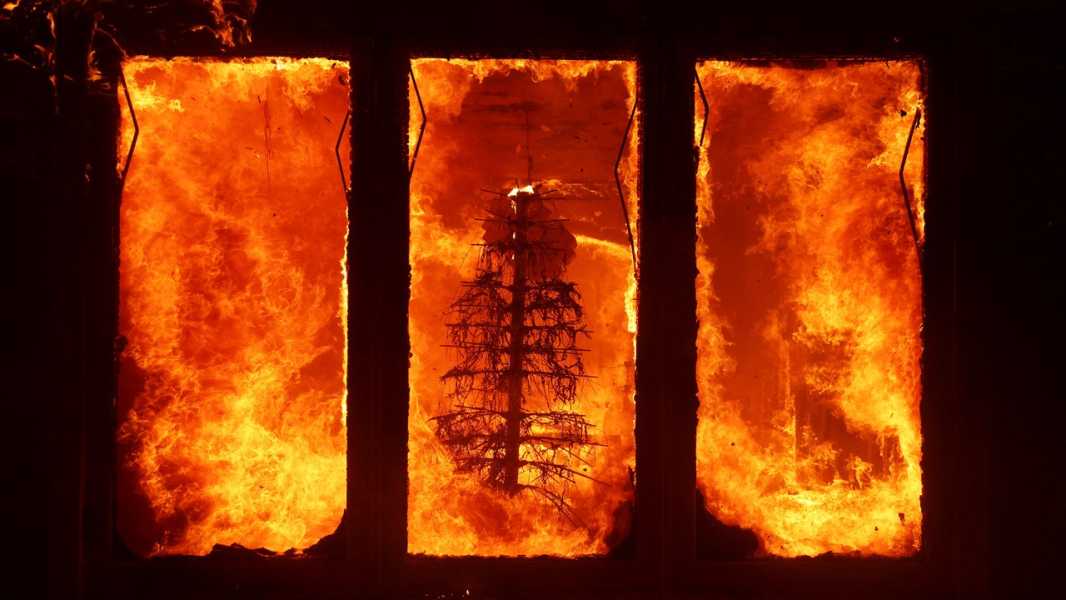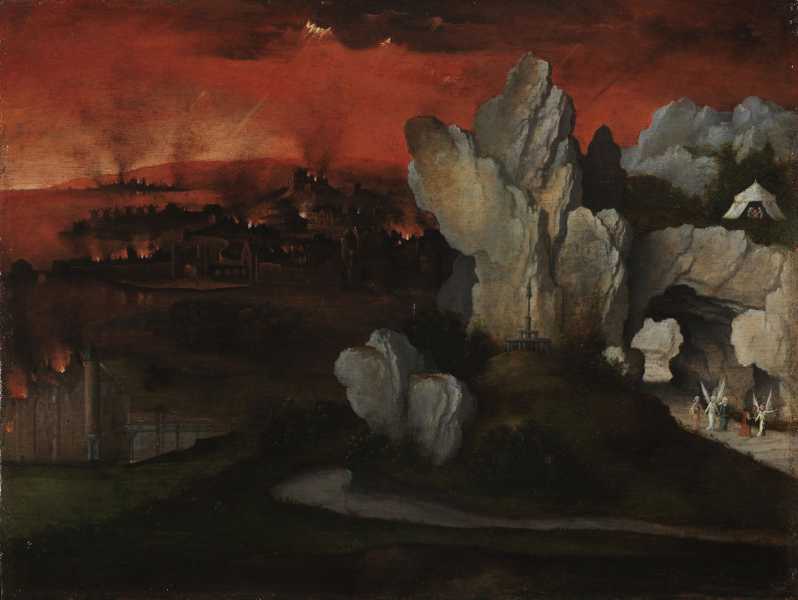
Save this storySave this storySave this storySave this story
The glow in the photos coming out of Los Angeles is otherworldly, though that is precisely the wrong term. Cinematic? That isn’t quite right, either: too painfully apt for Tinseltown, but also not accurate. There is nothing make-believe about the fires, or the silhouetted human figures who flee from or confront them. The most widely circulated of the photographs record dramatic moments: buildings on fire, landscapes on fire, the shadow theatre of burning palms, the smoke-choked vistas in which, here and there, people wear respiratory masks of dubious efficacy.
Smoke suffocates. You can’t opt out of breathing. When you’re inhaling smoke, all you want is to not be inhaling smoke. Your lungs plead for the air to be clear, for the smoke to not be there. (More people die, we’re often told, of smoke inhalation than of burns.) The way fire and smoke alter the world provides fascinating visual drama, but this is worthless compensation for the accompanying danger. As with all other disasters, fire is much easier to watch from far away. And so, to those of us who are not there, the fire arrives in the form of photographs.
The photographs are not all that different from video clips. Who has not, clicking through a news report, landed on a still photograph, only to notice it begin to move? The palette is the same—yellow ochre, cadmium orange, alizarin crimson, burnt sienna—and the scenes are the same. The videos, in fact, might be primed for even quicker visual consumption, and correspondingly quicker disposal. After all, a video lasts only as long as it lasts, a few seconds, but a photograph can last as long as you want it to. It has been said that climate change looks like the dissemination of ever more alarming amateur footage until, someday, you’re the one making the footage. Until you’re the one in grave danger.
These photographs and videos won’t last. They won’t last for the same reason that there are no lasting images of recent hurricanes, tornadoes, earthquakes: even with high demand for such images, there is consistent oversupply. But these images are fugitive for another reason—their function has changed. They bring us news of devastation, quick news that will soon be supplanted by other news. They are victims of an unremitting public need for novelty. The meanings of these images—which speak variously of environmental collapse, policy failure, ineluctable helplessness—do not invite their use as objects of contemplation. You don’t put photographs of the Lahaina blaze or the Camp Fire on the walls of your home. Our ways of seeing are not yet adequate to our predicament.
Images of this kind used to have a different function, five hundred years ago, say. Around the beginning of the sixteenth century in Europe, a taste developed for paintings of landscapes on fire. (This was around the time that a taste developed for landscape paintings at all; “the invention of the ship was also the invention of the shipwreck,” as Paul Virilio wrote.) It was an era in which many people had firsthand experience of the ravages of war. The paintings in part evoked those horrors; many of them, hell scenes by Hieronymus Bosch included, made cryptic political comment on the cruelties of their day. Paintings of landscapes on fire typically illustrated Biblical or religious scenes. Divine retribution was a central theme, but the possibility of escape was often embedded. Because there was more to these paintings than doom, they could be looked at contemplatively; and because they luxuriated in anecdotal, often fantastical detail, they could also be looked at for pleasure.
Take Joachim Patinir’s “Landscape with the Destruction of Sodom and Gomorrah” (circa 1520). Patinir was one of the painters most productively influenced by Bosch. Patinir’s painting, currently in the collection of the Museum Boijmans Van Beuningen, in Rotterdam, is a small picture, just under twelve inches on its longest side, but it gives the eye plenty to do. Across the upper left of the panel is a sky harshly transformed by fire. Patinir’s painterly eye knows well the sinuous gradations that can be drawn from a hot monochrome. Below this sky are the distant burning cities, set in a bay, startlingly familiar, the dark shapes of their buildings interspersed with points of light. The cities are enclosed by uselessly elaborate walls. Through a single monumental gate, a mass of tiny figures streams out, but there is nowhere to go. They will burn, or they will drown.

Joachim Patinir’s “Landscape with the Destruction of Sodom and Gomorrah” (c. 1520).Photograph from Heritage Images / Getty
Cities on fire: this is the very image of fear, the spectre of indiscriminate mass suffering. But a blessed few escape. On the right side of the Patinir painting are vertiginous, contorted rock formations in gray tones. Guided through an arch formed by those rocks, guided away from the livid sky by a pair of angels, are Lot and his daughters; it is a kind of reversal of the expulsion from Paradise. Here, exit is toward safety, though not exactly piety. To the top right is a flash-forward scene of the tent in which the spared family will later descend into drunkenness and incest. And in the very center of the panel, in flat, dark country, in literal no man’s land, is a small, broken vertical line consisting of flecks of white paint. The painter knew we’d come looking for a pillar of salt.
Three days before Christmas, just after midnight, I was woken up by the sound of someone shouting outside. I looked out the window. The street was lurid with the flashing lights of several fire trucks. Smoke billowed out from an apartment across the street. There were flames flickering at the top of the building. The fire trucks did not have their sirens on, and the shouting neighbor had stopped. In this silent riot, things felt unreal. The occupants of the burning building poured out onto the cold street and, soon, a woman trapped in her apartment was rescued by a ladder. Two hours later, the people who lived in the now-damaged building were allowed to get some of their things and go off to find temporary stays. The next morning, I told a friend what had happened. She said, “Fires are really awful.” More than anything else that day, I thought about this unsurprising but mysteriously adequate response.
Fires are really awful. They are sudden, they spread, they threaten life, they take life. A fire will put the fear of God in you. I looked at a photograph I’d made that night. The blood-red color of the apartment building was from the light cast by the fire trucks. The pungent smoke rising above the burning apartment now looked like an innocent cloud. The photograph was intense, but it was intense like a photograph, not like a fire. ♦
Sourse: newyorker.com